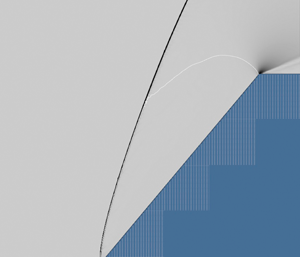Article contents
Shock detachment and drag in hypersonic flow over wedges and circular cylinders
Published online by Cambridge University Press: 25 March 2021
Abstract

In a recent publication, Hornung et al. (J. Fluid Mech., vol. 871, 2019, pp. 1097–1116) showed that the shock wave stand-off distance and the drag coefficient of a cone in the inviscid hypersonic flow of a perfect gas can be expressed as the product of a function of the inverse normal-shock density ratio  $\varepsilon$ and a function of the cone-angle parameter
$\varepsilon$ and a function of the cone-angle parameter  $\eta$, thus reducing the number of independent parameters from three (Mach number, specific heat ratio and angle) to two. Analytical forms of the functions were obtained by performing a large number of Euler computations. In this article, the same approach is applied to a symmetrical flow over a wedge. It is shown that the same simplification applies and corresponding analytical forms of the functions are obtained. The functions of
$\eta$, thus reducing the number of independent parameters from three (Mach number, specific heat ratio and angle) to two. Analytical forms of the functions were obtained by performing a large number of Euler computations. In this article, the same approach is applied to a symmetrical flow over a wedge. It is shown that the same simplification applies and corresponding analytical forms of the functions are obtained. The functions of  $\varepsilon$ are compared with the newly determined corresponding functions for flow over a circular cylinder.
$\varepsilon$ are compared with the newly determined corresponding functions for flow over a circular cylinder.
JFM classification
- Type
- JFM Papers
- Information
- Copyright
- © The Author(s), 2021. Published by Cambridge University Press
References
REFERENCES
- 3
- Cited by





